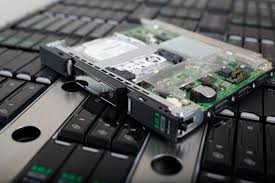This post covers the upgrade process for a EVA Upgrade. I wrote it ages ago but never got round to publishing it. In the spirit of blogtober I wanted to get it out there as I am sure there are still some HP EVA’s in use .
This is the steps I followed to upgrade the firmware on an EVA. You can read further on the steps using the EVA upgrade guide
Week Before
- Check current EVA and Command View versions
- Upgrade Command View to compatible version if relevant -10.3
- Download firmware from software depot
- Check for any hardware failures
- Upgrade HBA and switch firmware – check compatibility with SPOCK
- Check disk grouping policy is set to manual. System options, configuration, set system operation policies, manual
- Ensure you have The EVA SSSU (HP Storage System Scripting Utility) the command line tool for managing EVA systems installed. SSSU will generally be installed on your EVA management server
- To Use EVA SSU launch the program from the shortcut. You will then see a screen like belowSSSU for HP P6000 Command View
Version: 10.2.0
Build: 091012A
Manager:Name or IP address of CommandView Server
Username:administrator
Password:
Under manager enter the IP address or hostname of you EVA management server, then log on with an account with rights to the system. You can check which accounts have rights by looking at the local security group xxxx on the management server and seeing what local accounts are in there.
Once logged in you will need to choose which system to manage. To see what systems are available first list them:
NoSystemSelected> ls system
Systems available on this Manager:
EVA01
Then select which system you want to manage.
select system EVA01
Day Before
- Check hardware
- Check events – controller events
- Backup EVA system config as follows:
First connect and logon to the system using EVA SSSU instructions as described above
To capture system config to a file:
capture configuration C:config.txt
You can use the capture validate command to verify if the contents of the file still match the current configuration of the EVA.
Capture validate <filename to check>
Also as a best practice run ls disk_group full, ls host full, ls vdisk full before an upgrade
ls disk_group full > C:disk.txt
ls host full C:host.txt
ls vdisk C:vdisk.txt
- Backup data on EVA
Day of Upgrade
- Check hardware and controller events
- Configure User-Initiated Service Mode (UISM). System options, configuration, configure User-Initiated Service Mode (UISM)
- Disabling array passwords. Settings, management options, security options – manage storage system password access
- Shut down hosts – if offline
- Upgrade controller software – system options, code load system
- Tick box confirming you have completes pre-upgrade checks
- System runs automated system checks to see if its fit to continue
- Code transferred to controllers
- Upgrade begins
- Nodes reboot
- Verify version of XCS firmware after upgrade
- 30 min after upgrade check IO module firmware on disk enclosure
- Upgrade drive firmware allow 30sec-3 min per drive




